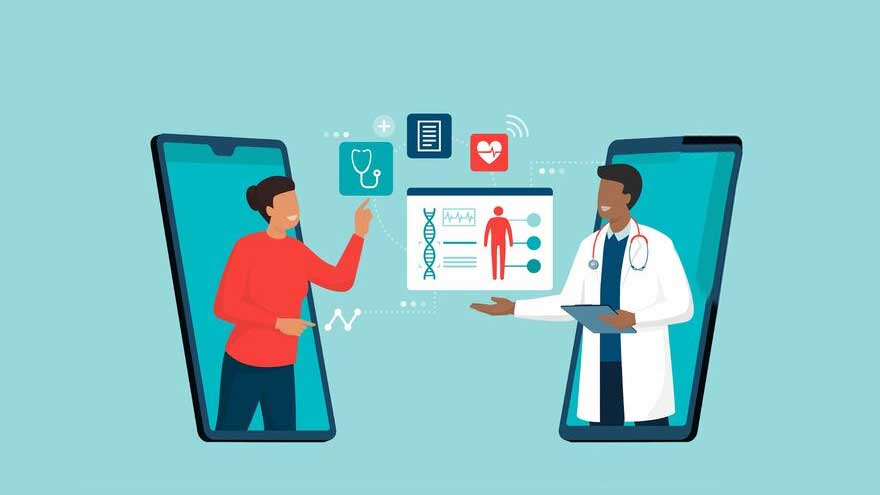Telehealth and Remote Medicine: Transforming Healthcare in the Digital Age
The advent of telehealth and remote medicine has revolutionized the healthcare industry, offering unprecedented access to medical services and transforming patient care. As technology continues to advance, telehealth is becoming an integral part of the healthcare landscape, particularly in the wake of the COVID-19 pandemic, which accelerated its adoption worldwide. This article explores the rise of telehealth, its benefits, challenges, and future prospects.
The Rise of Telehealth
Telehealth, also known as telemedicine, refers to the use of digital communication technologies to deliver healthcare services remotely. It encompasses a wide range of applications, including virtual consultations, remote monitoring, teletherapy, and mobile health apps. The concept is not new, but recent technological advancements and the need for social distancing during the pandemic have significantly boosted its popularity and utilization.
Key drivers behind the rise of telehealth include:
- Technological Advancements: The proliferation of smartphones, high-speed internet, and advanced medical devices has made telehealth more accessible and efficient.
- Pandemic Response: COVID-19 necessitated remote healthcare solutions to minimize the risk of virus transmission, leading to widespread adoption of telehealth services.
- Policy Support: Governments and healthcare authorities have implemented policies and regulations that support telehealth, including reimbursement for virtual visits and relaxed licensing requirements.
Benefits of Telehealth
Telehealth offers numerous benefits for patients, healthcare providers, and the healthcare system as a whole:
- Increased Access to Care: Telehealth bridges the gap between patients and healthcare providers, particularly in rural and underserved areas where access to medical facilities is limited.
- Convenience and Flexibility: Patients can receive care from the comfort of their homes, reducing the need for travel and waiting times. This is especially beneficial for individuals with mobility issues or chronic conditions.
- Cost-Effectiveness: Telehealth can reduce healthcare costs by minimizing hospital visits, lowering overhead expenses for healthcare facilities, and decreasing the need for emergency care through proactive monitoring.
- Improved Patient Engagement: Digital tools and remote monitoring devices enable patients to take an active role in managing their health, leading to better adherence to treatment plans and improved outcomes.
- Enhanced Healthcare Delivery: Telehealth facilitates timely consultations, second opinions, and follow-up appointments, ensuring continuous and coordinated care.
Challenges of Telehealth
Despite its advantages, telehealth also faces several challenges that need to be addressed to ensure its widespread and effective implementation:
- Digital Divide: Access to telehealth is limited by the availability of internet and digital devices. Rural and low-income populations may face barriers in accessing telehealth services.
- Regulatory and Licensing Issues: Variations in telehealth regulations and licensing requirements across regions can complicate the delivery of cross-border telehealth services.
- Privacy and Security Concerns: Protecting patient data in the digital realm is paramount. Telehealth platforms must adhere to stringent data security and privacy standards to prevent breaches and ensure patient confidentiality.
- Reimbursement and Insurance: While progress has been made, reimbursement for telehealth services is not yet universally standardized, which can affect the financial viability of telehealth practices.
- Technological Limitations: Not all medical conditions can be effectively diagnosed or treated remotely. The absence of physical examination capabilities can limit the scope of telehealth.
Future Prospects of Telehealth
The future of telehealth looks promising, with several trends and innovations poised to enhance its effectiveness and reach:
- Integration with AI and Machine Learning:b> Artificial intelligence can augment telehealth by providing decision support, predictive analytics, and personalized treatment recommendations based on patient data.
- Expansion of Remote Monitoring:b> The use of wearable devices and Internet of Things (IoT) technology for continuous health monitoring is expected to grow, enabling real-time data collection and proactive healthcare management.
- Virtual Reality (VR) and Augmented Reality (AR):b> VR and AR can enhance telehealth by enabling immersive training for healthcare professionals, remote surgery assistance, and patient rehabilitation programs.
- Interoperability and Data Sharing:b> Improving the interoperability of telehealth platforms with electronic health records (EHR) and other healthcare systems will streamline care coordination and information exchange.
- Policy and Reimbursement Evolution:b> Ongoing policy reforms and efforts to standardize telehealth reimbursement will support its sustainability and integration into mainstream healthcare.
Conclusion
Telehealth and remote medicine are reshaping the healthcare landscape by making medical services more accessible, convenient, and efficient. While challenges remain, continued technological advancements, supportive policies, and innovative solutions are driving the growth and adoption of telehealth. As we move forward, telehealth is poised to play a critical role in delivering high-quality healthcare and improving patient outcomes in the digital age.
By embracing telehealth, we can create a more inclusive, efficient, and patient-centered healthcare system that meets the needs of diverse populations and addresses the evolving challenges of modern healthcare.
